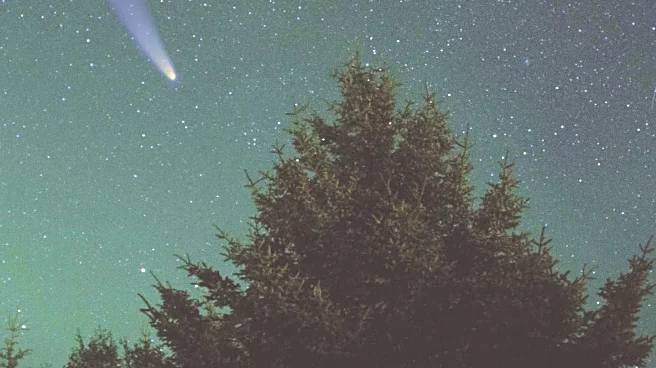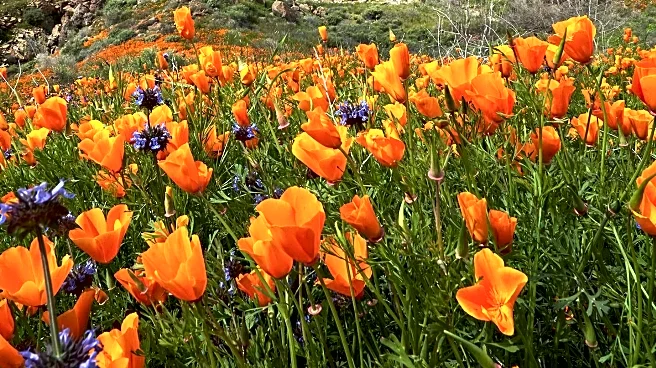What's Happening?
Gold, traditionally seen as a symbol of wealth and typically found in mines, is present in several unexpected locations. According to recent findings, gold exists in the human body, oceans, and even space. The average human body contains approximately
0.2 milligrams of gold, which plays a crucial role in transmitting electrical signals within nerve cells and maintaining joint health. Additionally, the oceans hold around 20 million tons of dissolved gold, although it is too diluted for profitable extraction. Furthermore, scientists believe that much of the gold on Earth arrived via meteorites billions of years ago, sparking interest in space mining as a potential new frontier for precious metals.
Why It's Important?
The discovery of gold in these unconventional places highlights its integral role in various natural systems and processes. In the human body, gold's presence is essential for proper physiological functions, emphasizing its biological significance. The vast amount of gold in the oceans, while currently impractical to extract, represents a potential resource that could be tapped with future technological advancements. The extraterrestrial origins of gold suggest that space mining could become a viable industry, potentially revolutionizing the way precious metals are sourced and impacting global economies. These findings could lead to new scientific research and exploration initiatives.
What's Next?
The interest in space mining is likely to grow as researchers continue to explore the feasibility of extracting precious metals from asteroids. This could lead to advancements in space technology and mining techniques, potentially opening up new economic opportunities. Additionally, ongoing research into the biological role of gold in the human body may uncover further insights into its functions and applications in medicine. Efforts to develop methods for extracting gold from seawater may also continue, driven by the sheer volume of gold present in the oceans.
Beyond the Headlines
The presence of gold in plants, such as eucalyptus and Norway spruce, adds another layer to its ecological significance. These plants absorb gold particles from the soil, suggesting a complex interaction between biological systems and mineral resources. This phenomenon could inspire further research into bio-mining and the role of microbes in facilitating gold absorption, potentially leading to innovative environmental and agricultural applications.













